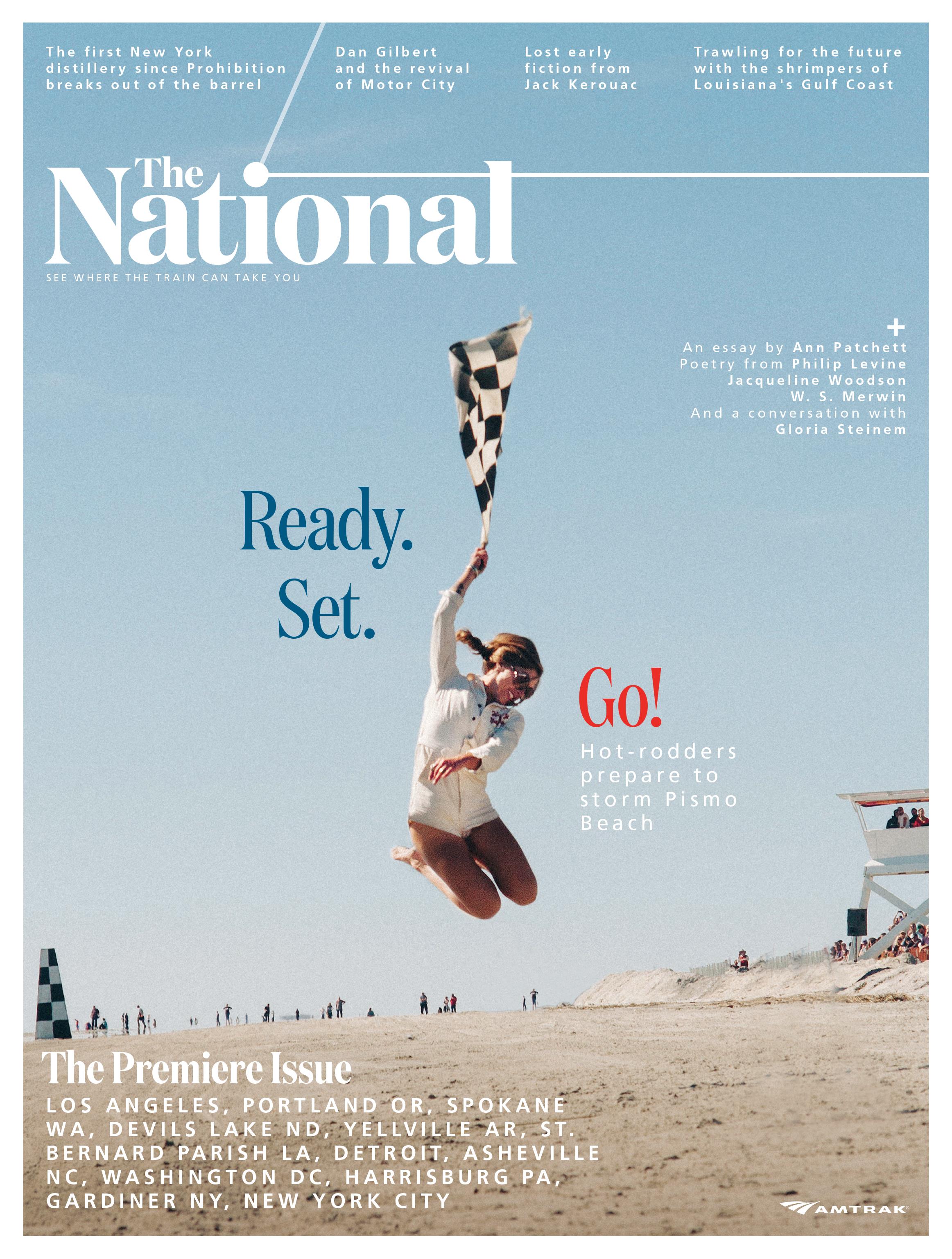‘The National’ – creating modern ‘Americana’ for US rail travellers
Swedish-born designer and self-styled magazine mastermind Rickard Westin has been conceptualising and re-designing inflight magazines for most of his career. This includes award-winning magazines for Norwegian Air, United Airlines, EasyJet and South African Express Airways.

Above: Rickard Westin
Westin is part of a team put together by inflight magazine specialists Ink Global who successfully pitched to the American National Railroad Passenger Corporation (Amtrak) to produce a bi-monthly national print magazine. The title will be distributed over the route network of 500 destinations and 46 states across the US. The prospect of producing the first grand magazine to celebrate Amtrak’s unique position as a rail service uniting America, ‘The National’ created a set of extremely exciting possibilities already reflected in the first issue of the magazine.
“Our point of departure was that train travel is not only romantic but also an indulgence. There are none of the anxieties – and restrictions – associated with modern air travel,” explains Westin. “People who take the train are into ‘slow travel’. They’re into savouring the trip. They’re not jetting in with an itinerary of everything they want to do and see. They want to really soak up the culture. That’s why we endeavoured to do an American culture magazine, as opposed to an American travel magazine. Trains are generous with time. It appeals to your senses, being able to enjoy the vast flow of the passing country-side whether it’s the Everglades or the Rockies. There is this comfort of enjoying food and drink and an opportunity to indulge in on-board entertainment. We wanted ‘The National’ to reflect all of this.”

Westin says it is for these reasons that the Ink creative team agreed from the outset that the magazine could never be a travel magazine or destination guide. “The word we used was ‘Americana’. We wanted to create a magazine that celebrated life along the railway lines – veins that unite the country. We also saw it as a unique opportunity to cover stories in places where there are no magazines at all. We can go and create something that is in fact missing from the market.”
Westin adds: “Let’s be honest, people aren’t going to jump on a train all across America to visit a festival we are writing about or a destination we propose. Hence our focus is on highlighting the cultures and uniqueness of certain areas. It’s not ‘here is what you eat and this is what you do’ but more ‘this is what the people here eat and this is what they do’.”
From a design perspective Westin says he wanted to steer clear of the increasingly prevalent trend of offering readers “shorter attention span” infographics so frequently found in inflight or ‘shortlist style’ magazines. “We assume our readers do have on board time to read; so there’s some good long form text and pages of great fine art photo essays in there.”

With none of the weight restrictions often curtailing the design of inflight magazines, the team could explore new possibilities. Westin is particularly proud of publishing, for the first time ever, a transcript of American novelist and poet Jack Kerouac’s ‘On The Road’, written in French in 1951 and recently translated into English. “It’s seven pages of text with quotes and only one image of him. It’s a long read that has the potential to occupy a reader for half an hour or so. It’s a luxury for us to be able to offer the opportunity to a passenger to indulge in good prose.”
So too is ‘The National Conversation’, a feature about a thought leader on an issue that is culturally relevant. “We chose Gloria Steinem, an icon to the boomer generation of feminists, now 82, for our first issue, doing an exceptional photo shoot and interview at her home.”
Westin says there are no compromises when it comes to doing justice to a well-researched long form pieces of journalism in the magazine. That said, there is also “snackable” content, like the section called ‘Rail Life’ featuring colourful vignettes about authentic people, places and experiences along the railway tracks.
This is balanced by a section entitled ‘Next Stop’: a longform feature on a person, organisation or a scene. The idea is to preserve or focus attention on an important piece of American culture or history. Meanwhile the section ‘Made In America’ profiles American companies – large or small – which are reinvigorating manufacturing in communities.
The magazine reflects the simplicity, minimalism and functionality of classic Swedish design. “I am Swedish after all,” laughs Westin. “I truly believe that what doesn’t exist cannot break. I have not added design elements like sign posts and entry points just because it’s common in most magazines. If you cannot vouch for why it’s there, it shouldn’t be there in the first place.”
Westin continues: “Having had the luxury of designing a magazine from scratch, I could marry functional design considerations and white space with a touch of old American ways of design. My aim was to make it as easy to read as possible. There’s not a lot of text on images, I have used only two large fonts and stuck to simplicity. This isn’t a magazine that will scream at you.”
The next issue of ‘The National’ is out now.
More like this
Why inflight magazines will continue to fly (despite Wi-Fi)
How digital disruption creates new publisher opportunities in the in-flight sector









